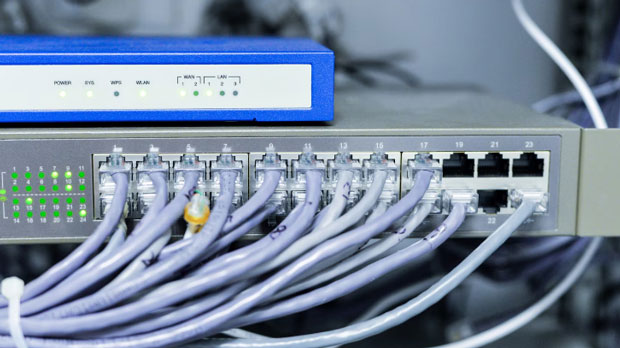How to Increase Internet Speed with Free Socks5 Proxy?
In today’s digital world, a slow internet connection can be incredibly frustrating. Whether it’s for work, streaming, or gaming, any lag or downtime significantly hampers productivity. One method some people use to enhance their internet speed is through a socks5 proxy. Although socks5 proxies are primarily known for providing enhanced privacy and security by masking a user's IP address, they can also help in boosting browsing speed, especially when accessing certain sites or services. In this article, we will explore how you can leverage free Socks5 proxies to potentially increase your internet speed, improve your online experience, and provide an overall better connection. Understanding Socks5 Proxies and Their FunctionalityBefore diving into the benefits of using Socks5 proxies to boost internet speed, it's crucial to understand what Socks5 is and how it works.A Socks5 proxy is a type of internet protocol that allows users to route their internet traffic through a third-party server, which then forwards the data to its destination. Unlike traditional proxies, Socks5 supports all types of internet traffic, whether it’s HTTP, FTP, or even torrent data. This makes it more versatile compared to other types of proxies like HTTP or HTTPS.The key benefit of using Socks5 proxies is that they can handle all types of data requests without altering or modifying the content. This results in less latency and, in some cases, faster internet speeds. By acting as a middleman, Socks5 proxies can also bypass geographical restrictions and internet throttling that might otherwise slow down your connection.How Free Socks5 Proxies Can Improve Internet SpeedWhile using a paid proxy service might offer better performance, free Socks5 proxies can still have a positive impact on internet speed under certain circumstances. Here’s how:1. Bypassing Geographical RestrictionsOne of the primary reasons for slow internet speeds is the restriction imposed by geographical locations. Some websites or streaming services restrict access based on the user's location, which can result in slow or even blocked access. By using a free socks5 proxy, you can choose a server located in a region where the content or service is not restricted, helping you avoid bandwidth throttling or slow speeds caused by geographical limitations.2. Circumventing ISP ThrottlingISPs (Internet Service Providers) sometimes slow down certain types of internet traffic to manage network load or to encourage users to upgrade to higher-tier plans. Common targets of throttling include streaming services, gaming servers, or torrenting activities. By using a Socks5 proxy, you can route your traffic through a different server, making it harder for your ISP to detect and throttle your connection. This could lead to faster speeds when accessing content that might otherwise be slowed down due to throttling.3. Reducing Latency and Avoiding Network CongestionWhen accessing content through a congested network, latency can become a significant issue, slowing down your connection speed. A Socks5 proxy can help by routing traffic through a server with a better network infrastructure, thus bypassing congested local networks and reducing latency. For instance, if you are trying to access a website hosted on a server far from your location, a proxy server located closer to the site’s server can reduce the time it takes for data to travel back and forth, improving your speed.4. Optimizing Speed for Certain Websites or ServicesSome websites or services may be slower for users from specific locations due to the distance between the user's device and the server. Free Socks5 proxies offer a solution by allowing you to connect to servers in different locations. This can be especially helpful when trying to access region-specific content, such as videos, news, or other media services. By using a proxy server located in a region closer to the website’s server, you can potentially reduce the time it takes to load pages and increase your internet speed for those particular services.5. Enhanced Security Leading to Better PerformanceSocks5 proxies provide a level of security by masking your original IP address and routing your traffic through an intermediary server. This not only helps to protect your privacy but also improves the overall speed of the connection by avoiding certain security-related bottlenecks. Many websites today implement various security checks that can slow down the connection speed. With Socks5, your traffic appears to come from the proxy server, which may result in fewer security checks and potentially faster access.Challenges and Considerations When Using Free Socks5 ProxiesWhile there are clear benefits to using free Socks5 proxies to boost internet speed, there are also some challenges and potential downsides to be aware of:1. Reliability and Performance IssuesFree Socks5 proxies often come with limited resources, and their performance can fluctuate significantly. As these services are often shared by many users, the servers can become overloaded, leading to slower speeds or even connection failures. Additionally, free proxies may not offer the same level of security or privacy as paid options, which can result in unwanted exposure of personal data.2. Limited Server LocationsFree Socks5 proxies tend to have a smaller selection of server locations compared to paid services. This means that you might not be able to find a server near the location of the website you want to access, which can limit the potential for speeding up your internet connection. If a proxy server is far from the target website’s server, it could actually increase the latency, defeating the purpose of using a proxy in the first place.3. Security ConcernsWhile Socks5 proxies do offer some security advantages, free proxies may not always ensure the best protection for your data. Many free proxy providers may log your browsing activities, sell your data, or expose you to security risks like malware. It's essential to exercise caution when selecting a free Socks5 proxy and consider whether the speed improvement is worth the potential security risks.4. Unstable Connection and DowntimeSince free Socks5 proxies are typically not maintained as rigorously as paid options, they may experience more downtime. If a proxy server is down or experiencing high traffic, your internet speed can suffer, or the connection may be completely interrupted. This can be a major issue for users who rely on a stable connection for work or other important tasks.How to Maximize the Benefits of Free Socks5 ProxiesIf you’re looking to use a free Socks5 proxy to boost your internet speed, there are several best practices to keep in mind:1. Choose Proxies with High-Speed ServersAlthough free proxies may not always offer the best performance, some providers do offer servers that are faster than others. Look for Socks5 proxies that are advertised as having high-speed connections, and test them to find out which one works best for you.2. Select Servers with Low LatencySelecting a proxy server that is geographically close to the target server can help reduce latency and improve your connection speed. Try to choose servers located near the region you wish to access.3. Use Proxies for Specific ActivitiesInstead of relying on a free Socks5 proxy for all of your internet activities, use them for specific tasks that benefit from reduced throttling or geographical restrictions. For example, using a proxy to access streaming content from another country could offer a faster and more efficient browsing experience.4. Be Prepared for Limited PerformanceGiven that free proxies are shared by many users and come with limited resources, it’s important to set realistic expectations. You may experience fluctuations in speed and occasional downtime, so it’s not advisable to rely on free Socks5 proxies for critical activities.ConclusionIn conclusion, free Socks5 proxies can offer a useful solution for improving internet speed, especially when it comes to bypassing geographic restrictions, avoiding ISP throttling, and reducing latency. However, their performance can be inconsistent, and users should be cautious about security risks. By understanding the benefits and limitations of free Socks5 proxies, you can make informed decisions to enhance your online experience. Keep in mind that while they can offer a speed boost, they should be used with a clear understanding of their potential drawbacks.
2025-01-06

























































